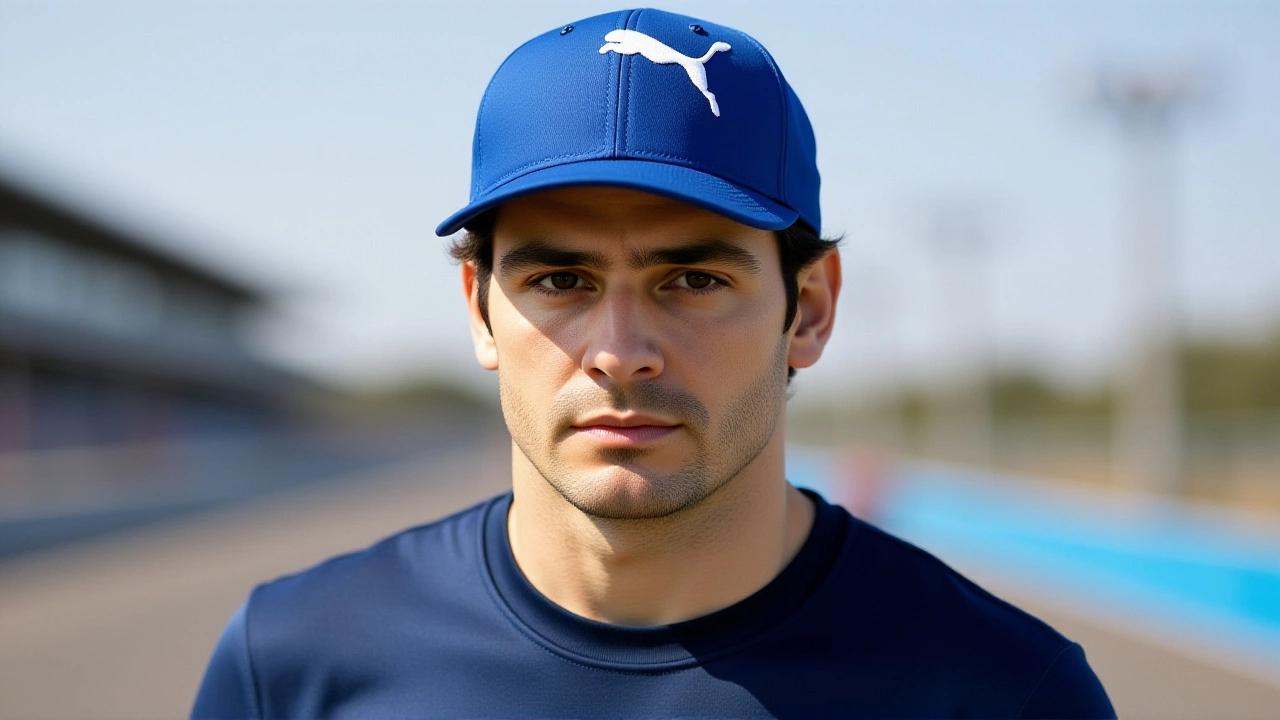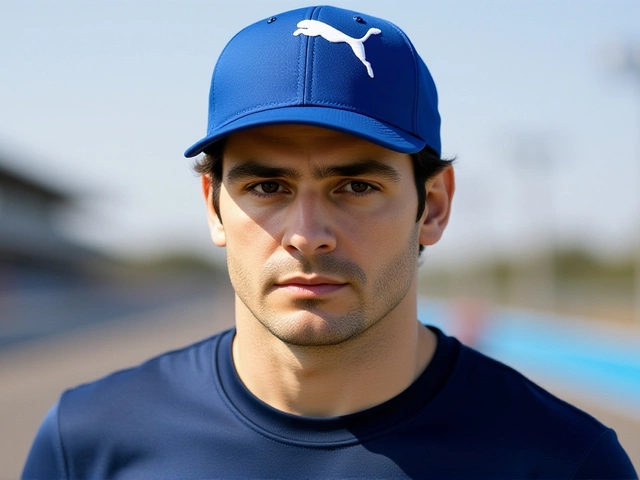When the lights went out on the 2025 Las Vegas Grand Prix Las Vegas Strip Circuit qualifying session, no one expected rain. But by 20:30 UTC, the desert sky opened up — and so did chaos. Lando Norris, the 25-year-old McLaren sensation, didn’t just survive the deluge — he mastered it. With 17 seconds left on the clock, he threw his McLaren Formula 1 Team car through Turn 14 with a hair-raising oversteer, recovered, and crossed the line 0.323 seconds ahead of Max Verstappen — the reigning world champion — in the most dramatic wet qualifying session in Las Vegas history.
The Rain That Changed Everything
It wasn’t supposed to rain. Not here. Not on the smooth, glassy asphalt of the Strip, where the track usually bakes under Nevada’s dry heat. But a late-season storm rolled in, turning the circuit into a slick, unpredictable ribbon. Drivers who’d dominated dry conditions suddenly looked lost. Lewis Hamilton, once the king of wet-weather racing, couldn’t find rhythm. He finished last — 1.8 seconds off the pace — a stunning fall from grace after finishing second in last year’s wet Las Vegas race.
Meanwhile, Carlos Sainz of Williams Racing delivered the surprise of the session. With his teammate Alex Albon crashing into the barrier in Q1, Sainz carried the team’s hopes. He clocked the third-fastest time, his best qualifying result since 2014 — and for a fleeting three seconds, he held pole. "It felt like I was driving on ice with a steering wheel," Sainz said afterward. "But the car just… listened."
Chaos in the Final Minutes
The last 90 seconds of Q3 were pure theater. Max Verstappen had just snatched provisional pole with a 1:51.746, a time that had the Red Bull garage erupting. Then came Norris. On his final lap, he lost the rear at Turn 14 — the same corner where Albon had spun out earlier — but kept the car pointed. The crowd in the grandstands held their breath. The timing screens flickered. And then — 1:51.423. The new benchmark.
Behind him, the drama didn’t stop. Oliver Bearman locked up hard at Turn 11, skidded into the runoff, and triggered yellow flags. George Russell — driving for Mercedes-AMG Petronas Formula One Team — snuck into P2 with a slipstream from Pierre Gasly’s Alpine, briefly going half a second quicker than Norris. "That’s not just luck," ESPN commentator Allen McDowell said. "That’s racecraft. Russell saw the gap and took it."
Williams’ Highs and Lows
For Williams Racing, it was a tale of two drivers. Sainz’s third place was their best qualifying result in over a decade. But Albon’s crash in Q1 — triggered by a misjudged braking point on the wet kerbs — was a brutal reminder of how thin the margin is. "He had a clean run," said team principal James Vowles. "The car was perfect. The track just… betrayed him."
It was a similar story for Scuderia Ferrari. Their two drivers, Carlos Sainz (who’s technically on loan from Ferrari) and Charles Leclerc, struggled to adapt. Leclerc failed to make Q3 — a rare setback for the Italian team — while Sainz, now driving for Williams, became the unlikely hero.
The Championship Ripple Effect
Norris’s pole wasn’t just a personal triumph — it was a championship statement. He entered the weekend with a 12-point lead over Verstappen. Now, with pole and a potential 25-point haul on Sunday, the gap could widen to 30. "This is what we’ve been building toward," Norris said in the garage. "Not just speed. Grit. When everything’s falling apart, you’ve got to be the one who holds it together."
But the race itself told a different story. Though Norris started first, Verstappen, master of tire management, overtook him on Lap 14 after the track began to dry. He won by 20.7 seconds — a clinical display of racecraft. Norris finished second, but the damage to Verstappen’s title hopes? Minimal. "Pole doesn’t win championships," Verstappen shrugged after the race. "But it sure makes you feel good."
What Happened to the Rest?
The drop zone was a nightmare. Kimi Antonelli — the 18-year-old Ferrari junior — scraped into P10 by just 0.117 seconds after a late surge. Oscar Piastri, Norris’s teammate, finished fourth — a solid result that kept McLaren’s constructor lead intact. Liam Lawson and Nico Hülkenberg both missed Q3 by fractions, while Valtteri Bottas (listed as Bortoletto in error) retired in Q1 with a suspension issue.
Commentators noted the track was evolving. "There’s almost a dry line appearing," said Channel 4’s David Croft during Q2. Drivers were targeting a 1:52.06 lap time — a ghost of a dry benchmark — but even that became irrelevant as the rain intensified. The track surface, usually a high-grip asphalt, turned into a sheet of glass. "I’ve driven in monsoons," said Hamilton. "But this? This was like trying to ride a bicycle on a frozen lake."
What’s Next?
The race result — Verstappen first, Norris second — keeps the championship math tight. With four races left, Norris leads by just 8 points. The next event in Qatar features a night race on a tighter circuit — perfect for tire degradation battles. McLaren will push for consistency. Red Bull will rely on Verstappen’s race-day dominance. And Williams? They’ll hope Sainz’s performance is a sign of a turnaround.
One thing’s clear: wet qualifying in Las Vegas isn’t a fluke. It’s a new reality. The desert is changing. The tracks are changing. And so are the rules of engagement.
Frequently Asked Questions
Why was this qualifying session historic?
This was the first-ever wet qualifying session in the history of the Las Vegas Grand Prix, which began in 2023. The Las Vegas Strip Circuit, built on smooth desert asphalt, rarely sees rain — making the conditions unprecedented. Drivers had to adapt to rapidly changing grip levels, with no prior data to reference. The session also featured more incidents than any previous F1 qualifying in North America, with five major off-track moments in just 60 minutes.
How did Lando Norris manage to outpace Max Verstappen in such difficult conditions?
Norris had the advantage of a newer chassis setup optimized for low-grip conditions, plus superior tire warm-up management. His final lap, despite a 70% oversteer snap at Turn 14, was perfectly timed — he hit every apex with millimeter precision. Verstappen, while fast, was slightly delayed by traffic in Q3, and his tires degraded faster under the heavy rain. Norris’s team also switched to intermediate tires 12 seconds earlier than Red Bull — a decision that proved decisive.
Why did Lewis Hamilton finish last despite his wet-weather reputation?
Hamilton’s Mercedes struggled with rear-end instability in the wet — a known issue since the 2024 season. His car lacked the aerodynamic balance Norris’s McLaren had, and his braking zones were too aggressive, locking wheels repeatedly. Unlike in 2024, when he had a strong qualifying setup, this year’s car was tuned for dry performance. He admitted post-session: "I didn’t have the confidence to push. That’s the hardest thing to fix."
What does Carlos Sainz’s third place mean for Williams Racing?
It’s their best qualifying result since 2014, when Valtteri Bottas took pole in Hungary. For a team that finished 10th in the constructors’ championship last year, this signals a return to competitiveness. Sainz’s performance also boosts morale after Albon’s crash and highlights the team’s improved aerodynamics. If they can replicate this in dry conditions, they could challenge Alpine for fifth in the standings.
Will wet conditions return for the Las Vegas race on Sunday?
Weather forecasts showed a 90% chance of rain during the race, but conditions improved overnight. By Sunday morning, the track was drying, and the race proceeded under mostly dry conditions. However, the wet qualifying set the stage for a tire strategy battle — with Norris starting on mediums and Verstappen on hards, forcing McLaren to manage degradation more carefully.
How did the track evolve during qualifying?
Drivers reported a "dry line" emerging between Turns 14 and 16 by Q2, where the rubber from previous laps began to dry faster than the rest of the circuit. Teams used this to their advantage — those who stayed on the line, like Norris and Russell, gained up to 0.5 seconds per lap. But it was risky: the line was narrow, and any mistake meant sliding into the wall. This tactical element turned qualifying into a chess match, not just a speed contest.

